We Did Ours... Here's Theirs
 NASA started the year on an upbeat
and positive note, when President George W. Bush announced the
Vision for Space Exploration on January 14. His announcement at
NASA Headquarters in Washington of a robust space exploration
program to advance US scientific, security and economic interests
became the keystone for NASA's transformation.
NASA started the year on an upbeat
and positive note, when President George W. Bush announced the
Vision for Space Exploration on January 14. His announcement at
NASA Headquarters in Washington of a robust space exploration
program to advance US scientific, security and economic interests
became the keystone for NASA's transformation.
"NASA has a new face and new approach to operations and
programs," said NASA Administrator Sean O'Keefe. "We've taken the
recommendations of the Columbia Accident Investigation Board, the
President's Commission on Implementation of US Space Exploration
Policy, and input from other key advisory panels, and applied them
to our return-to-flight efforts, International Space Station
operations, and our implementation of the Vision for Space
Exploration," he said.
President Bush said in June, "The Vision for Space Exploration
is a sustainable and affordable long-term human and robotic program
to explore space. We will explore space to improve our lives and
lift our national spirit."
 "The enthusiastic support of the
Congress, both in spirit and as reflected in NASA's fiscal year
2005 budget, will allow us to begin implementing the Vision for
Space Exploration and to continue our exciting and extensive
exploration projects," O'Keefe (right) said.
"The enthusiastic support of the
Congress, both in spirit and as reflected in NASA's fiscal year
2005 budget, will allow us to begin implementing the Vision for
Space Exploration and to continue our exciting and extensive
exploration projects," O'Keefe (right) said.
"As we approach the return to Space Shuttle operations, NASA is
facing the most exciting time in the agency's 46 year history. How
we meet the technical and cultural challenges and how we
successfully change this agency will guide our path within the
Vision for Space Exploration for decades," O'Keefe said. "We expect
continued success as NASA leads the efforts to explore the Earth
and the universe through space-based research," he said.
NASA is enthusiastically approaching restoration of Space
Shuttle operations, completion of the International Space Station
and scientific exploration in a safe, milestone-driven manner.
NASA's budget is an endorsement of the Vision for Space Exploration
and agency efforts to understand and protect the Earth; explore the
universe; search for life; and inspire the next generation of
explorers, as only NASA can.
NASA Aggressively Pursues Transformation
NASA transformed into a mission-oriented agency during the year.
Four major mission directorates -- Exploration Systems, Space
Operations, Science and Aeronautic Research were formed to manage
agency operations. Mission support offices, including the
Independent Technical Authority, were established to ensure safety,
quality assurance and effective program management. Transformation
of NASA's organization structure was designed to streamline the
agency and create a framework that affixes clear authority and
accountability, while positioning the agency to implement the
Vision for Space Exploration.
Schools Across The Nation Catch The Vision
NASA's 2004 Explorer Schools Program provided information and
interactive activities for more than 20,000
elementary-to-high-school pupils in 46 states and Washington. The
three-year partnership between NASA and selected schools in diverse
communities offers opportunities and materials for teachers to
spark interest in science, technology and math. Applications for
2005 Explorer Schools Program are being accepted.

NASA'S Rovers A Big Hit On Mars And Earth
NASA successfully landed the mobile geology labs Spirit and
Opportunity on Mars on January 3 and January 24, respectively.
Opportunity discovered evidence its landing site was a standing
body of water in the distant past, raising the possibility key
ingredients for life might have existed on Mars. In April, both
rovers successfully completed their primary three-month missions
and went into bonus overtime work. Spirit completed a two-mile trek
to the Columbia hills. Opportunity descended into Endurance Crater
and found layers of rocks bearing evidence of having once been
drenched in water.
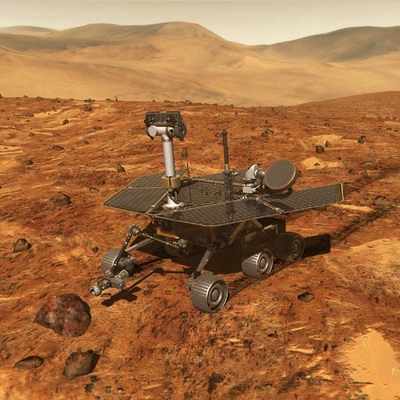
WEB Portal Is Window To The World
Highlighting agency-wide programs and missions, the NASA portal
served up more than 17 billion hits and 1.6 billion page views
during 130 million visits. It sent out more than one million
webcast streams of NASA TV. Interest peaked quickly with the
landings of the Mars Rovers in January, as nearly 50,000 people
watched the live webcasts during the landings. Portal traffic had a
four-fold increase from 2003 to 2004, and a ten-fold increase from
2002.
Tougher Space Shuttle Readied For Return To Flight
Shuttle processing activities at NASA's Kennedy Space Center,
Fla., assumed a pre-launch rhythm, after almost two years of
innovative and intensive agency-wide effort to make the fleet
safer. The most significant Return to Flight work was on the
Shuttle External Fuel Tank, which was redesigned to eliminate
debris from striking the spacecraft. NASA also focused on the
ability to assess the condition of Shuttles in orbit. The first
Shuttle mission since the Columbia accident, Discovery (STS-114),
has a launch window opening in mid-May.

Centennial Challenges Taps Technology Advances
NASA developed the initial Centennial Challenges prize
competition to tap the nation's ingenuity to make revolutionary
advances to support the Vision for Space Exploration.
International Space Station Enters Fifth Year Of
Operations
Three crews lived on the Station during 2004, as the orbiting
laboratory entered its fifth year as a staffed facility. Each
two-person crew, working with ground teams, did its part to keep
the Station safely operating. Crews made unprecedented repairs to
an oxygen generator, a crucial piece of exercise equipment and a US
spacesuit. They also performed a spacewalk to restore power to a
gyroscope.
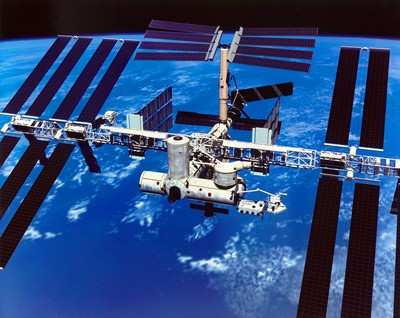
Year Of Firsts For Space Station Crewmembers
All three US crewmembers had personal milestones. Expedition 8
Commander Mike Foale returned to Earth as the US record-holder for
time in space, logging 374 days, 11 hours and 19 minutes over
several missions. Expedition 9 Flight Engineer Mike Fincke is the
first US astronaut to have a child born, while he was in orbit.
Expedition 10 Commander Leroy Chiao is the first US citizen to vote
from space in a presidential election.
Next Generation Of Explorers Selected
NASA announced the 2004 astronaut candidate class, the first
focused on fulfilling the Vision for Space Exploration. The class
includes three educator astronauts, three military pilots, a Navy
SEAL, an astrophysicist, two physicians and an engineer.
Space Station Research Yields New Health Information
A NASA-funded study revealed how bone loss increases the risk of
injuries, highlighting the need for additional measures to ensure
the health of spacecraft crews. This research may aid people on
Earth who suffer from similar conditions including osteoporosis.
Space Station astronauts, using ultrasound techniques developed by
NASA, demonstrated the ability to quickly and remotely transmit
medical data to the ground. These techniques are directly
transferable for Earth use to improve patient care in remote
locations.
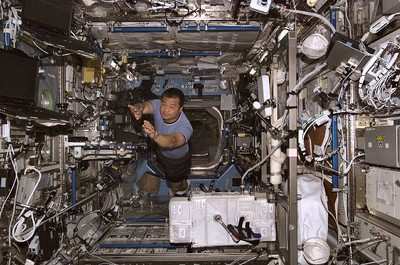
Cassini-Huygens First Mission To Orbit Saturn
After a seven-year, two billion mile journey, Cassini-Huygens
became the first spacecraft to go into orbit around Saturn. The
NASA, European and Italian Space Agencies' mission found the planet
roiled by storms, detected lighting, discovered a new radiation
belt, found four new moons, a new ring around Saturn, and mapped
the composition of the planet's rings. Cassini flew within 745
miles of Titan, the closest any spacecraft has come to Saturn's
largest moon.
New Supercomputer Improves Research And Forecasting
NASA named its newest supercomputer Columbia to honor the crew
of the Shuttle Columbia. It is one of the world's most powerful
supercomputing systems. It will dramatically increase NASA's
capacity for conducting scientific research, modeling, forecasting
and engineering. Improvements in the supercomputer's climate model
are being used to explore the Earth's atmosphere. Results from the
model indicate significant improvements in forecast accuracy for
major storms and hurricanes.
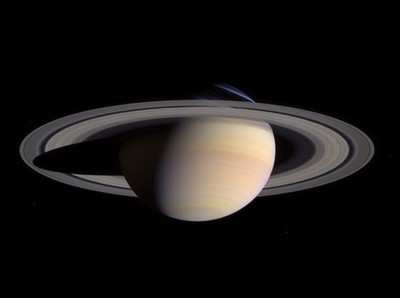
Proposals Selected For Exploration Research &
Technology
NASA selected proposals from industry and academia to support
the research, technology goals and objectives of the Vision for
Space Exploration. The selections were part of the effort to
develop new partnerships among NASA, industry and academia. NASA
also awarded the first contracts to conduct preliminary concept
studies for human lunar exploration and the development of the Crew
Exploration Vehicle.
Genesis Crash-Lands But Brings Home Precious Samples
The Genesis solar-sample return mission made a hard landing in
the Utah desert, but NASA managed to preserve a significant portion
of the precious samples of the sun it brought back from space.
Genesis scientists believe they will achieve the most important
portions of their science objectives, which should tell us about
the conditions when the sun and planets were created more than five
billion years ago. Genesis was launched in August 2001.
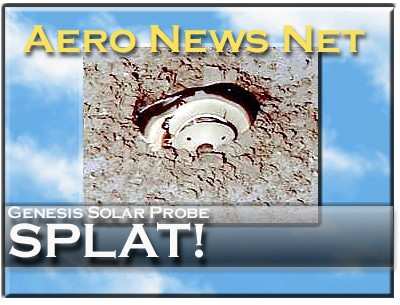
Stardust Makes Historic Comet Flyby
NASA's Stardust mission flew within 147 miles of the comet Wild
2. Sent to collect samples, images and other data, the flyby
yielded the most detailed, high-resolution comet images ever --
revealing a rigid surface dotted with towering pinnacles, plunging
craters, steep cliffs, and dozens of jets spewing material into
space. Launched in 1999, Stardust is headed back to Earth with its
payload of thousands of captured particles. The sample return
capsule is scheduled for a soft landing in the Utah desert in
January 2006.
Spitzer Space Telescope Unveils Strange Cosmic Sights
The Spitzer Space Telescope pierced cosmic dust to reveal
previously hidden objects. It unmasked a family of newborn stars
whose birth was triggered by the death of another star; a dying
star surrounded by a mysterious donut-shaped ring; a cannibalistic
galaxy and what may be the youngest planet ever detected. Spitzer
identified one of the farthest galaxies yet seen, measuring its age
and mass for the first time. Spitzer was launched August 24,
2003.
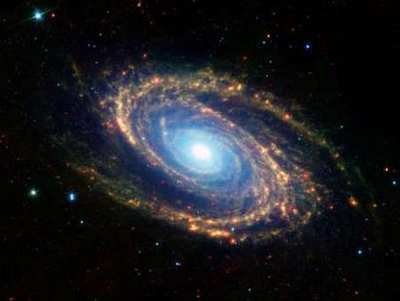
Swift Offers New Possibilities To Spot Birth Of Black
Holes
NASA's Swift satellite will pinpoint the location of distant,
fleeting explosions that appear to signal the births of black
holes. Each gamma-ray burst is a short-lived event, and Swift
should detect several weekly. Swift, launched Nov. 20, is a mission
with British and Italian participation designed to solve the
mystery of the origin of gamma-ray bursts.
Hubble Sees Farther Than Ever
Astronomers used NASA's Hubble Space Telescope to take the
deepest portrait ever of the visible universe. The Hubble Ultra
Deep Field revealed the first galaxies to emerge from the time
shortly after the big bang, when the first stars reheated the cold,
dark universe. The image should offer new insights into what types
of objects reheated the universe. The image exposed galaxies too
faint to be seen by ground-based telescopes.

Aura Spacecraft Will Help Us Understand The Air We Breathe
NASA's Aura, a next generation Earth-observing satellite
launched on July 15, is supplying the best information yet about
the health of Earth's atmosphere. Aura will help scientists
understand how atmospheric composition affects and responds to
Earth's changing climate; help reveal the processes that connect
local and global air quality; and track the extent Earth's
protective ozone layer is recovering.
Jupiter Icy Moons Orbiter Enters Design Phase
NASA selected Northrop Grumman Space Technology, Redondo Beach,
Calif., to co-design the Prometheus Jupiter Icy Moons Orbiter
(JIMO) spacecraft. JIMO will be the first NASA mission using
nuclear electric propulsion. The system will enable the craft to
orbit Jupiter's three planet-sized moons, Callisto, Ganymede and
Europa. JIMO will perform extensive investigations of their
composition, history and potential for sustaining life.

Scramjet Breaks Speed Record, Flies Near Mach 10
NASA's X-43A scramjet-powered research vehicle successfully
broke its own speed record, flying nearly Mach 10 (7,000 mph). It
showed promise for developing more airplane-like operations in
ultra high-speed flights within the atmosphere, increased
affordability, flexibility and safety for the first stage to Earth
orbit.

Earthquake Prediction Program Scores Big
A NASA-funded earthquake prediction program has an amazing track
record. Published in 2001, the forecast has accurately predicted
the locations of 15 of California's largest earthquakes this
decade, including September's California tremors. Of 16
earthquakes, magnitude five and higher occurring since Jan. 1,
2000, 15 fell on hotspots identified by the forecasting
program.
Satellites Act As Thermometers In Space
NASA satellites, acting as thermometers in space, confirmed
Earth has experienced an increasing "fever" for decades. Satellites
were used to develop a record from 1981 to 1998 of global
land-surface temperatures. The research provided better proof
Earth's snow-free land surfaces, on average, warmed during this
period. This unique satellite record is more detailed and
comprehensive than previously available ground measurements.
Moon Sheds Light On Earth's Climate
A NASA-funded study found insights into Earth's climate might
come from the moon. During the 1980s and 90s, the Earth bounced
less sunlight out to space. The trend reversed during the past
three years. The apparent change in the amount of sunlight reaching
Earth in the 1980s and 90s is comparable to doubling the effects of
greenhouse-gas warming since 1850. Increased reflectance since 2001
suggests change of a similar magnitude in the opposite
direction.

Satellites And Balloons Spot Airborne Pollution
NASA scientists, using multiple satellites and balloon-borne
sensors, discovered pollution could catch an airborne wind current
from Asia all the way to the southern Atlantic Ocean. Scientists
believe, during certain seasons, as much as half the ozone
pollution above the Atlantic may be speeding down a track of air
and precipitation from the Indian Ocean.
Extended Trmm Operations Help Forecasters
NASA extended the Tropical Rainfall Measuring Mission (TRMM).
The extension ensured data for forecasters and researchers during
worldwide storm seasons TRMM data aids government agencies and
others researching, monitoring and predicting rainfall and
storms.
Gene Studies Help Understand Disease
NASA scientists and their academic colleagues provided valuable
insights into how DNA encodes instructions to control basic
biological functions. This research may change the understanding of
human diseases and will help NASA ensure astronauts' well being
during long-duration space missions.

Dust Bowl Drought Finally Explained
NASA scientists used a computer model developed with satellite
data to look at the climate over the past 100 years. The study
found cooler-than-normal tropical Pacific Ocean surface
temperatures combined with warmer tropical Atlantic Ocean
temperatures turned America's breadbasket into a dust bowl from
1931 to 1939.
 ANN's Daily Aero-Linx (04.15.24)
ANN's Daily Aero-Linx (04.15.24) Classic Aero-TV: 'No Other Options' -- The Israeli Air Force's Danny Shapira
Classic Aero-TV: 'No Other Options' -- The Israeli Air Force's Danny Shapira Aero-News: Quote of the Day (04.15.24)
Aero-News: Quote of the Day (04.15.24) Airborne 04.16.24: RV Update, Affordable Flying Expo, Diamond Lil
Airborne 04.16.24: RV Update, Affordable Flying Expo, Diamond Lil ANN's Daily Aero-Term (04.16.24): Chart Supplement US
ANN's Daily Aero-Term (04.16.24): Chart Supplement US

















